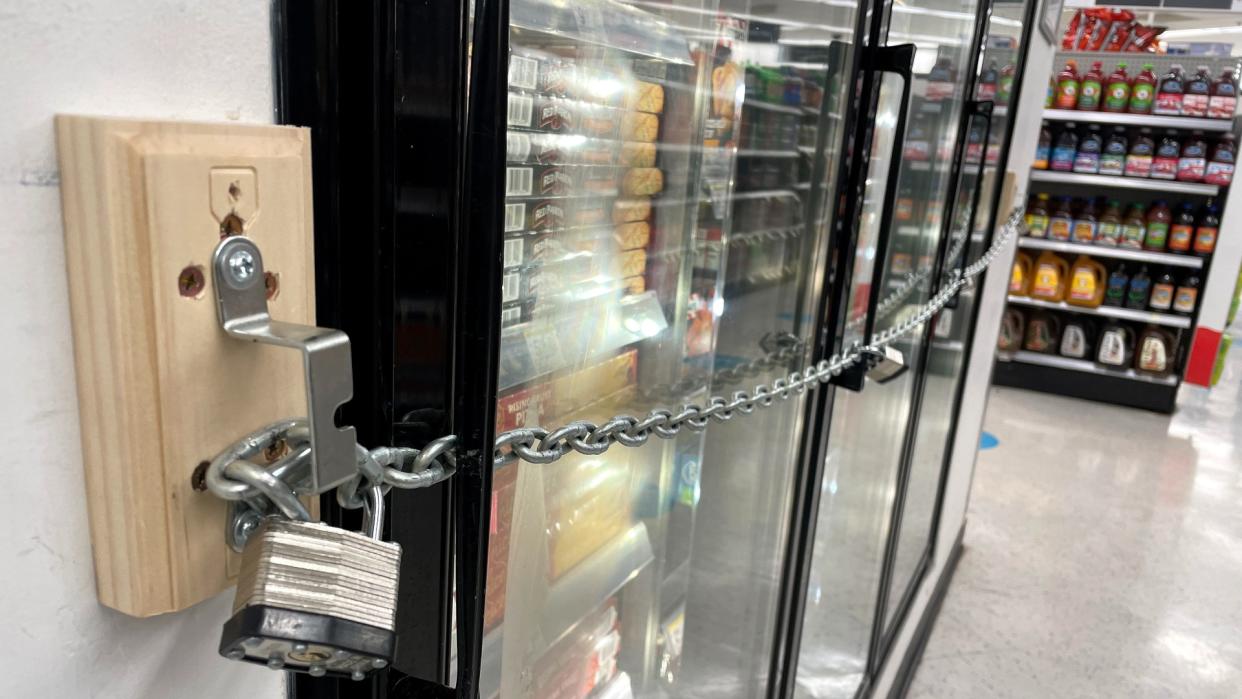Why retailers are walking back claims of organized theft

Claims of coordinated retail theft plaguing stores across the United States have become commonplace news stories in recent years. This was seemingly corroborated by a report this April from the National Retail Foundation (NRF) that determined "nearly half" of the merchandise stolen in the U.S. in 2021 was the result of organized retail crime, or ORC. This is defined by the NRF's website as the "large-scale theft of retail merchandise with the intent to resell the items for financial gain."
However, the NRF ended up retracting its estimate this month after the trade outlet Retail Dive reported that this figure was incorrect and "used an old NRF estimate of total inventory loss, including loss unrelated to theft." But while the NRF pulled back its claim following Retail Dive's report, it maintained that ORC remained a significant problem. Despite this, there seems to be a continuing disparity in the media between the assumed reasons and true causes of retail theft.
What was the discrepancy in the report?
While the NRF originally estimated that almost 50% of theft in 2021 was from ORC, most experts agree that this number was incorrectly reported. Organized groups were likely responsible for just 5% of all theft, Trevor Wagener, the chief economist at the Computer & Communications Industry Association, told The New York Times. In reality, ORC "represents only a small fraction of total retail inventory shrink in the best publicly available data — about $0.07 per $100 in total retail sales for the most recent years," Wagener said during a congressional hearing on retail crime.
In response to the allegedly false information, the NRF said that the "nearly half" estimate came from congressional testimony by Ben Dugan, former head of advocacy for the Coalition of Law Enforcement and Retail, and that they inferred this figure based on his testimony. The inclusion of the "nearly half" claim in the NRF's report was "taken directly from Ben's testimony," a spokesperson for the NRF told Reuters.
What is the real data on retail theft?
Despite the discrepancy, the NRF maintained that ORC has been "a high-priority concern for the retail industry for decades" and "[has] a harmful economic impact on retail companies and [endangers] store employees and customers." ORC did increase on average in 2021 from what it had been in prior years. Wagener also told Congress that while the NRF's original number had been inflated, ORC "could be mitigated by better resources for law enforcement and prosecutors to work with retail businesses to pursue criminals."
Whether shoplifting statistics have actually gone up or down "depends on the inclusion of New York City," which has become a major hub for retail theft, the Council on Criminal Justice (CCJ) said in a recent report. If New York City is included in the data, reported shoplifting incidents have increased 16% from 2019 to 2023; if New York City is excluded, shoplifting has fallen 7%, the CCJ reported. While stories about large groups of looters have dominated the media, just 0.1% — or one out of 1,000 — cases of shoplifting "involved six or more people," the CCJ added.
However, the CCJ also noted that the overall data on shoplifting may be skewed due to a lack of reporting and information on cases.
Why is retail theft so difficult to track?
The NRF's retraction "underscores just how difficult it is for the industry to accurately measure the impact and source of inventory losses," CNBC reported. The initial claim from the NRF had contradicted even in its own annual survey, CNBC added.
"We recognize the challenges the retail industry and law enforcement have with gathering and analyzing an accurate and agreed-upon set of data to measure the number of incidents in communities across the country," the NRF said in a statement.
Those who cover the retail industry remain skeptical. "The retail lobby has admitted that its most eye-catching and widely publicized statistic about it is a lie," Los Angeles Times business columnist Michael Hiltzik reported. "The figures published by big retailers and the retailers' lobbyists have always been squishy in the extreme," he added. A large reason for the difficulty in data gathering, Hiltzik said, is that retailers often lump together a variety of reasons for inventory loss, including "pilferage or embezzlement by employees ... mixups that result in their losing track of inventory; and external theft."

